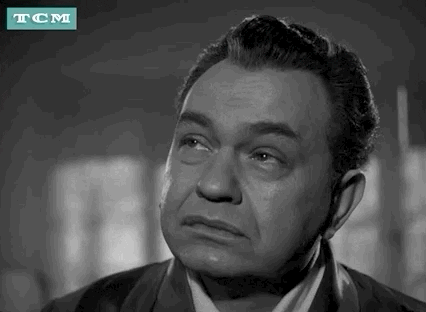My grandfather died six months shy of his hundredth birthday.
None of us were openly cheering him toward the century mark. That opening line just felt better than “My grandfather lived to be 99 and a half.” It’s the difference between sounding like you were robbed and looking like a quitter.
If I had one more Tuesday with Pop-Pop, I wouldn’t bring back the old guy on the porch bitching about the color of his neighbor’s house. I’d want the 22-year-old department store window dresser.
If you’re a marketer, that guy could teach you a thing or three.
In case you weren’t around, shopping in a department store used to be like theater. And the street-level windows were the equivalent of a stage manager calling “Curtain up!”
Toward the end of the art form, window dressing had become more spectacle than salesmanship. But in the early days, it’s how stores brought people in off the street.
“In the old days, window displays were the primary form of marketing,” said Simon Doonan, who was famous for designing Barneys windows at its flagship Manhattan store.
Pop-Pop had a gift for merchandising shop windows with everything from clothing to appliances to furniture.
Some days, he’d let the product do the talking. On others, he might come up with a sign that read “Nobody but nobody should live without a Whirlpool.” (Say that in an old-timey voice for the full effect.)

“The key to doing windows,” he said, “was making the customer part of the experience. The woman outside shouldn’t see a dress. She should imagine herself wearing it. Then, it’s as good as out the door.”
Making your customer the hero is timeless wisdom. Because while media continues to evolve, human nature doesn’t change.
Nobody wakes up in the morning eager to be served an ad for your product. They want something your product can do for them. That means your story needs to be about your customer—not you.
And if your audience doesn’t see themselves in your marketing …
You’re losing sales.
I wish I could be gentler, but that’s the truth.
The day you stop caring about your customers’ hopes, fears, and desires is the day you begin your unholy descent toward bankruptcy.
I can’t think of a more dismal note to end on. So, let’s push a little further and talk about how you can tailor your pitch to exactly what’s on your prospect’s mind. It begins with answering this essential question …
What’s my audience’s stage of awareness?
Just because you’ve identified a viable candidate for your product or service doesn’t mean they’re ready to buy. First, you need to figure out their current mindset and let that drive where you begin the conversation.
I know that takes restraint. But you can’t shove a “subscribe now” button in someone’s face before you’ve exhausted every reason why that person should choose you while also draining every objection along the way.
Your prospect is in one of five stages of awareness when you engage them–
1. Unaware
2. Problem aware
3. Solution aware
4. Product aware
5. Most aware
Once you know where someone’s head is, you can move them through each subsequent stage until you get to your offer. Here’s what to look for …
😴 Your prospect is unaware when they haven’t experienced a pain or event that triggers their need for something new. They may be set in their ways and possibly using the “cost of doing business” excuse as a crutch to support their primitive thinking. This is the toughest sell of the bunch, but they could be nudged forward if your solution can make a significant improvement in their life.
🙁 Your prospect is problem aware when they’ve felt a pain and need to find a solution. Use testimonials that highlight current customers who experienced similar anxieties or aggravations and used your product as a clear way out.
😄 Your prospect is solution aware when they’ve begun looking at products to solve their problem. They’re likely researching multiple solutions, so look for ways to make their evaluation process easier. Don’t just tell them what your product can do, but also what it can’t do. Admitting your shortfalls makes the rest of your pitch more trustworthy.
🤔 Your prospect is product aware when they’ve begun going deeper into your features and benefits. They spend loads of time here looking for value. Now is when you should give them trust signals like reviews and guarantees to boost confidence and dismantle any perceived risk.
😎 Your prospect is most aware when they have everything they need to make an informed decision. You’ve put in the work and they’re finally ready to hear your offer. Just don’t blow it by taking the focus off your customer. You’re not selling product—you’re selling outcome.
You may think that’s a lot of pre-work, but isn’t it better than your pitch derailing because you went for the close too early?
How ‘bout this …
If you get tangled up, just hit reply and let’s talk it through. Happy to help.
One last thing before we get called in for dinner.
I’m sorry about all that bankruptcy talk back there. That was a little aggressive.
But I can’t tell you how many marketers agree on the importance of knowing their audience’s mindset only to race for their harpoon gun once my back is turned.
Good thing you’re smarter than that.
Here’s a song to play you out >>>
See you next time. – Matt
P.S. Hat tip to copy legend Eugene Schwartz for authoring the five stages of awareness and to Joanna Wiebe for keeping them alive.
If you want a fresh marketing nugget emailed to you every week (give or take), join here.


